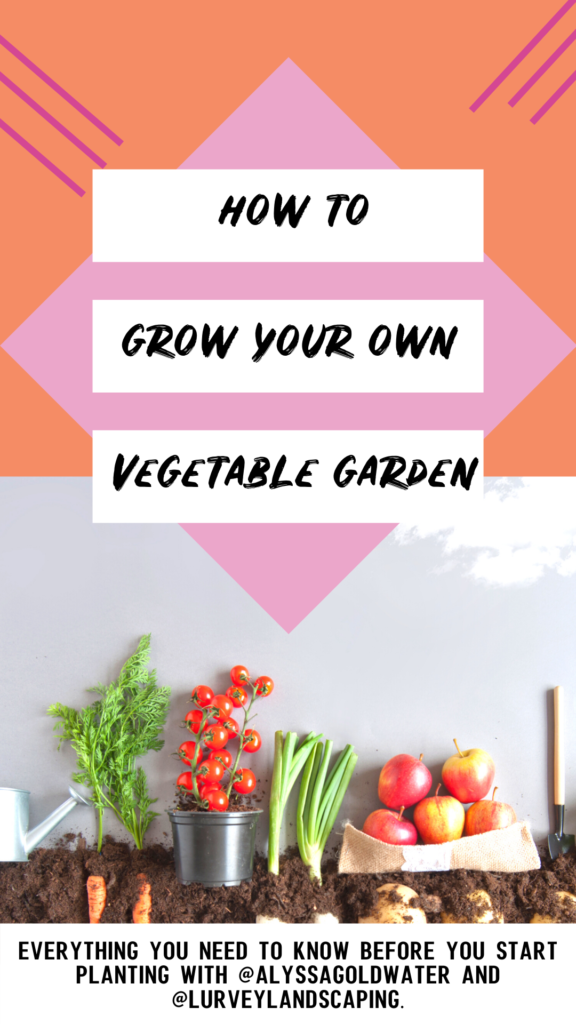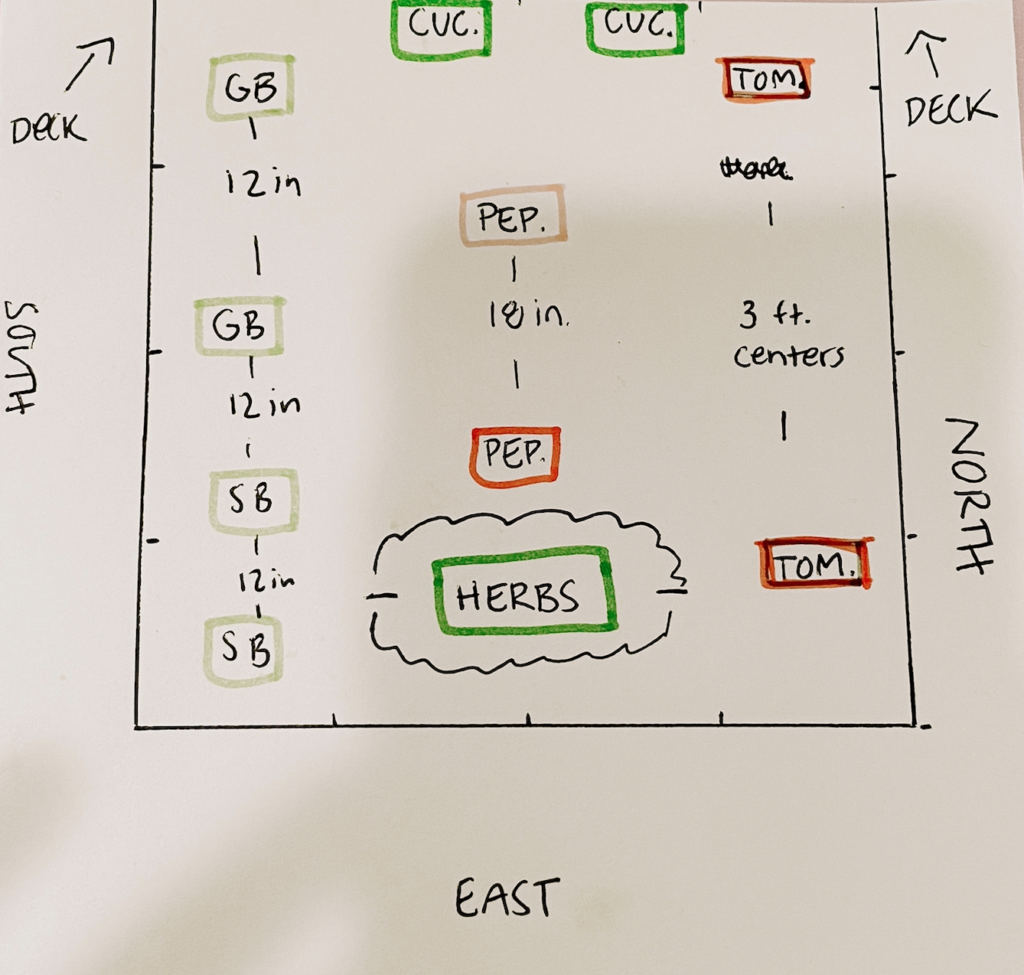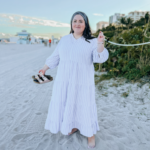Thank you to Lurvey Home and Garden for sponsoring this post. Without their vast knowledge, care and kindness none of this would be possible.
I’ve been gardening since I was a kid. It was something that my dad and I started doing together after my mom passed away. And there will be a post for that, but for now, I want to focus on my new summer venture. We’re building a vegetable garden! And I hope we’ll have an awesome harvest. But we’ve never planted veggies before, so there’s always a learning curve.
I’m so grateful to the crew over at Lurvey in Des Plaines, IL (straight down Dempster, just past Advocate Lutheran General Hospital). They have such a wealth of knowledge, and they are there to hold your hand as you venture into the amazing world of food gardening.

If you have no idea what you’re doing, start here.
Before you take a trip to Lurvey (if you’re in Chicagoland) or your local garden center, there are a few things you’ll want to think about:
- What time of year is it? And when do you want to plant? Different vegetables are “cooler” veggies (like peas), and some are plants that thrive throughout the summer (like tomatoes).
- Where do you plan to put your vegetable garden. Where in your yard is going to get at least 6 hours of sun every day? And are you going to do an in-ground garden, or an above-ground garden? This is super important.
- Once you know where, it’s a good idea to measure exactly, or get a general idea, of how big you want your garden to be.
- What do you and your family like to eat? Don’t plant things you aren’t going to eat!
Next, take a trip to Lurvey or your local garden center (if you’re not in the Chicagoland area). I know people tend to want to do things on their own, but ignorance is never bliss when it comes to gardening. Ask questions! The first thing you should do, is find the person who appears to be the head of the veggies/herbs. They are going to be your North Star Guide in this process. If you go to Lurvey, find Marty for your fruits/veggies/herbs. I can’t say enough good things about working with him.
Be open and honest with your prior harvesting experience (even if it’s none) so that the expert can guide you toward veggies that are easier to grow for your first season. For your first season, you might want to start with vegetable plants, not seeds. We planted some seeds to see what would happen, but we’ll plant vegetable plants in our actual garden. If you do want to plant seeds, it’s better to do this earlier (end of March/April), and would require a trip to the garden center a bit earlier.
**I highly recommend going to a garden center when you can, but I will include some links to seed-starting materials on Amazon, if you can’t get to a nursery.
What’s next?
Enjoy walking around the garden center. Smell all of the herbs, and look at all the different, beautiful vegetables that G-d created.

Your Garden Center Guru is going to be most helpful as far as spacing of your vegetables in your garden. Certain plants need more space than others. Once you figure out spacing and the specific types of plants you want to plant, it would be beneficial to sketch out what your garden will look like. Even better if you can do this to scale. At Lurvey, they are happy to help you with this. I would never have been able to remember where things go, the spacing, etc without having a map to remind me.
Your garden center will be able to advise you about the proper soil and fertilizer as well. These are super important — kind of like the foundation to anything else, the foundation of your garden is super important.

So what are we planting?
Like I said, we’re newbies in the vegetable garden realm, so we started small and simple. And this will all be in a 4 ft x 4 ft, raised garden bed.
- 2 tomato plants — 1 “Super Sweet 100” cherry tomato plant and 1 regular “Early Girl” tomato plant
- 2 cucumber plants — “Patio Snackers”
- 2 pepper plants — “Big Bertha” red bell pepper, “North Star” yellow bell pepper
- 2 green bean plants — “Jade Bush” beans
- 2 soy bean plants — these will make edamame!
- 1 basil plant (but we might add more) — “Mammoth”
As you can see, we chose our garden based on what we like to eat, as well as some vegetables that we thought would be fun for the kids to pick and eat. Cue: the Super Sweet 100 cherry tomatoes, Patio Snacker Cucs (which will be the size of mini cucs), the green beans and the soy beans will also be little and fun for the kids to pick.
We made our garden to be a family effort — not only something that we could benefit from as far as sustenance, but also as a way to bond and do this together all season long. So it was important that we keep all ages of our gardeners in mind.
If you’ve got a more large-scale, landscaping project, Lurvey can help you with that too. They truly offer some amazing client services to make your project special, fun and seamless.
I learned a lot of behind-the-scenes tips about plants and choosing them.
Pro-Tip:
- When choosing herbs, take your hands and put them around the base of the plant. Rub up the plant so you get the oils on your hand. (I realize this may sound perverted to some of you. Get your heads out of the gutter!) You’ll be able to really smell each herb and get a good sense of what type of cooking you might want to do with them. This is especially helpful with various types of the same herb, like Basil.
- Cucumbers and Tomatoes need A LOT of space. Like 3 ft. in between per plant. They also grow big and tall, so you’ll have to get a trellis of some sort for them to grow up and over.
- Many of the vegetable plants will come will 2-3 stalks in one little planter. You have to choose which is the strongest, and break the other stalks. You can only plant one. There’s not enough room for all 3, and the roots will fight with each other if you don’t break down the weaker ones.
- Sometimes a small flower will grow in the middle of the Basil plant. It’s really important that you pull the flower out. It’s not supposed to be there.
That’s about it! If you plan more in advance, you’ll be successful in the end. I spent about 2 hours at Lurvey figuring out the plan for our garden. It’s a labor of love, and I can’t wait to share the rest of it with all of you. Stay tuned for planting day and the rest of the season!








Leave a Reply